Background:
The Product Advisory Committee is a six-month-long user research program done remotely over the phone with one, 30 minute conversation per month, with 10 of GoCanvas’s power users. There's an ongoing research effort to define who GoCanvas customers are and what behaviors are apparent at different points in the Product Journey.
Role: User Researcher
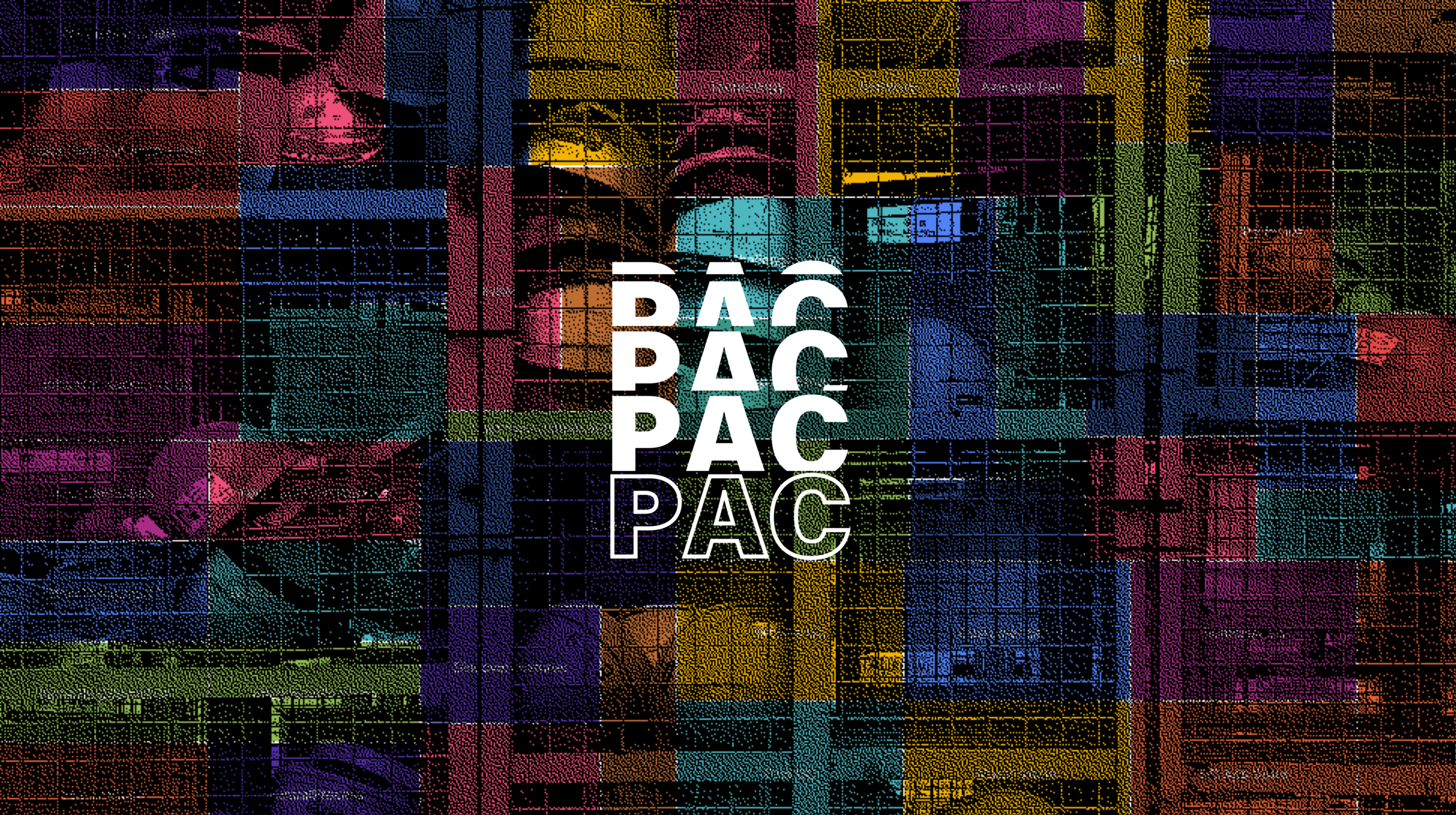
Problem 💣
In order to create a full product journey map with personas, more information about current customers was crucial.
What was the approach?
This study was executed using the longitudinal interview methodology which included;
Moderating monthly a 30-minute interview call with each of the ten users for six months.
Authoring and co-authoring of monthly interview scripts
Qualitative data synthesis
Presentation of data insights
Business Benefits
This research would give our team better insight into how GoCanvas users leverage the platform. All of the results from the study would go into persona definition and refinement, journey-map creation, and contribute proven research to long term product strategic decisions.











What is the Longitudinal method and why was it used? 🤷🏽♂️
The longitudinal interview method allows our team to check in with the customers monthly in order to establish and build upon our relationship with them, and to gain a deeper understanding month over month of how the platform is being used, rather than having a one-off interview.
This approach uncovers current experiences (both with the product and the task it is supposed to aid), people's priorities, desires, and collects anecdotes over time.
We're able to detect development and changes in customer behaviors at the individual level because the study extends beyond a single moment in time. Building relationships with customers can be challenging, but this methodology helped build an intimate relationship. Using this methodology allowed us to obtain insight that we wouldn't have gained any other way.
Research Objectives
[fig 05] User sizes of the 10 research reporting groups
Clarity on customer lifetime value ⏳
How can we increase the GoCanvas Customer Lifetime Value (CLV)? Sustaining and growing current accounts that contribute to the business bottom line is a critical lever to the company.
Customer product use 📱
The insights yielded provided additional clarity on how some of our current users think about the product, product-usage, the company, what their impressions are, etc.
It's important to note; this isn't just about identifying strong or weak points in the GoCanvas product, but more so why customers make decisions about how they use GoCanvas in their day-to-day. That type of information will yield us qualitative data, which makes us better informed, so we can strategize and create better product solutions that contribute to overall CLV.
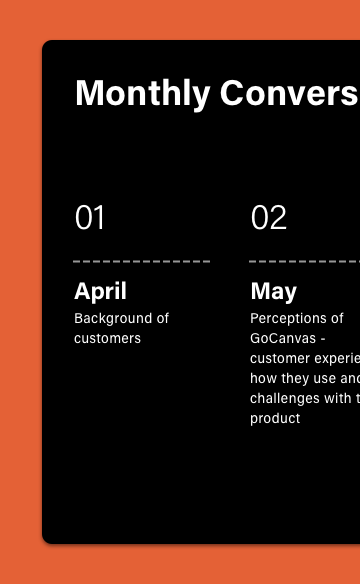
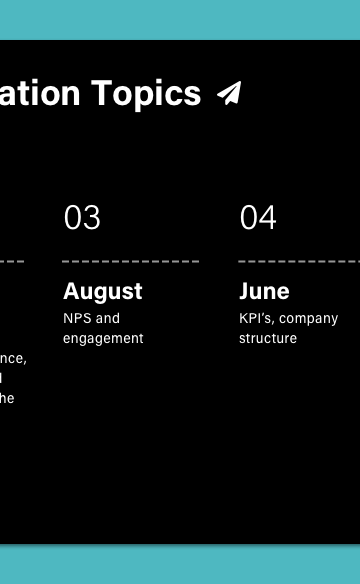
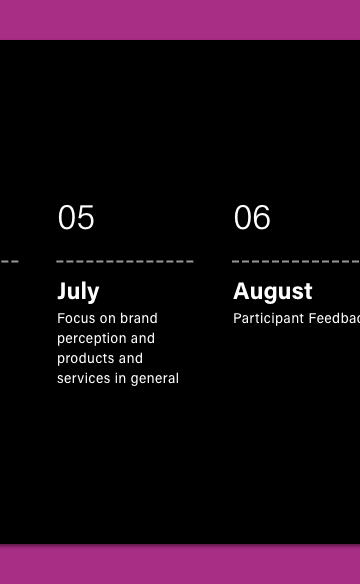

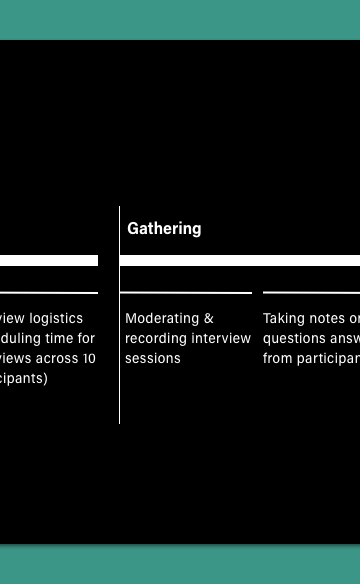

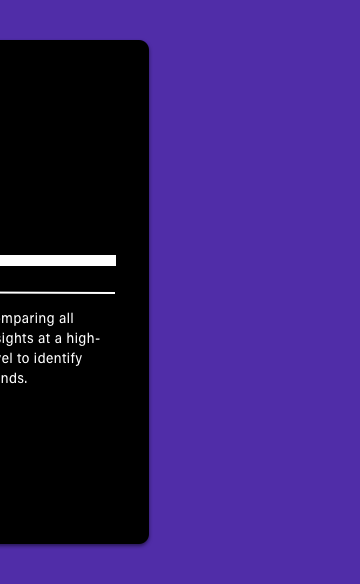
What were the takeaways? 📚
A clear pattern started to emerge after analyzing all of the qualitative data and turning them into insights (there were over fifty of them). They began to fall into different thematic categories that centered around the keywords of Trust, Customization, and Time.
For example, one insight revealed that trust in a business is essential to GoCanvas PAC customers. Various factors, such as professional relationships, directness, product integrity, and business tenure, all play a massive part in how and with whom they do business. It also surfaced that our GoCanvas account managers do well with assisting existing users on new use cases and light troubleshooting, which in turn adds trust.
Interestingly, the insights from this research corroborate with results in various usability sessions conducted over the last couple of months. So we're beginning to uncover and triangulate critical insights about our product, which coincide with feedback that we've received in multiple usability sessions, compounding the importance.
Results🥇
After categorically organizing our findings, the research was presented to project managers, team/dept. leads, and other stakeholders. Our collected data became a crucial part of filling in the gaps, when completing our personas and journey map.
Additionally, the PAC research study insights became critical in stakeholder decisions to shift the GoCanvas brand narrative from only acknowledging a single narrow value proposition backed by assumptions, to adopting one that speaks more to the GoCanvas customer base. Early qualitative testing has shown that this new brand approach resonated 78% better than the old, and 80% saying that the updated content was more transparent than the previous content.
The value out of this study isn't just limited to the data gathered; it also lets GoCanvas customers know that we value, and care about their input. The potential organic growth through word of mouth and relationship building can elevate them up to be micro-influencers in their industry communities, as well as in our digital forums. All of which further cultivates the community that GoCanvas is aiming to serve.
![[fig 05] User sizes of the 10 research reporting groups](https://images.squarespace-cdn.com/content/v1/5e6065103f92890cfc414312/1586241434264-QN1BRRI06D0QOAJ0CPEO/Reporting+Groups+Copy.png)



